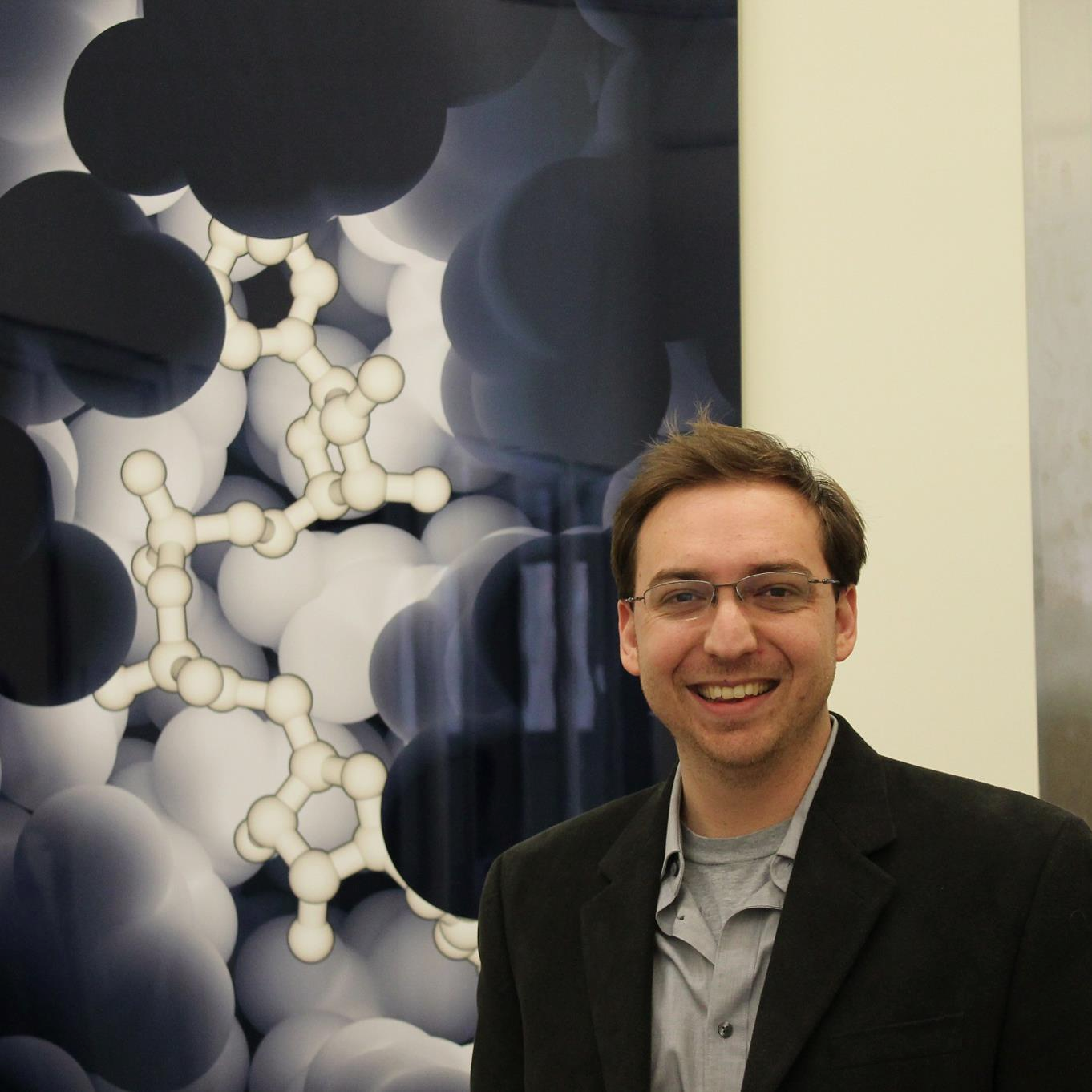CIE Researcher of Distinction, April 2014
Kevin Hauser
Each month, the Center for Inclusive Education showcases the outstanding research being conducted by one of our talented scholars in our Research Cafe series. In addition, we recognize this scholar as a Researcher of Distinction and share the details of their journey to becoming an accomplished scholar. This month's Researcher of Distinction is Kevin Hauser, a Ph.D. candidate in the Department of Chemistry. Kevin presented his talk, "Helical Motions of a Human Transcription Factor Drive DNA Binding and Recognition" on Wednesday, April 2, 2014.
Kevin's Path Into Research
Kevin hails from the Sunshine State, growing up in Riviera Beach, Florida. He went to Suncoast High School, which continually appears in the top ten in Newsweek’s “Best High Schools in America" list. In his junior and senior years, practically all of his teachers held doctoral degrees in their respective fields. Kevin’s teachers were excellent and demanding teachers, but also genuinely cared about their students. While he was in high school, he participated in the Chrysler Build Your Dream Car National Competition, which won his school close to $100,000 from 2000 through 2002. He was also an International Baccalaureate student and earned an IB diploma upon graduation. After high school, Kevin attended the University of Florida, Gainesville, where he majored in Chemistry and was a Bright Futures Scholar.
How did you become interested in research?
I always wanted to do research; I am a day dreamer – the content of those daydreams are rather intensely curious about nature and how it works. Physical processes and mechanics are the driving forces of chemistry, from the color of car paints to the code of DNA. As the job of a proper researcher is to first develop a hypothesis (daydream as I playfully understand it) and then test it, I realized early on that research was what I was born for. I got into this specific field (computational chemistry) by attending a chemistry club meeting (at Florida) in which Adrian Roitberg introduced me to molecular dynamics simulations, a field I believed (and still do) provides unique and powerful means to answer important scientific questions in biochemistry that classical experimental techniques could never answer.
What was your undergraduate research experience like?
Undergraduate research was awesome – I learned a lot about science and how research gets done. But I also learned, from first-hand experience, that I could do research, and that I like doing research. I got my pinky toe in the door, enough to meet my current research advisor, and get into graduate school to pursue exactly the sort of research I wanted without delay. It was an enabling experience.
Kevin's Current Research
Describe the work you will be presenting for your Research Café.
Proteins are the workers of the cell and one of their most important functions is to control the expression of genes. To understand this deep issue, we first must understand how proteins read DNA. We know how some of this works – a protein will bind to a random sequence of DNA, rapidly slide along it, then when it encounters its target site, change structure and stay put. We do not know, however, how proteins change structure during these processes because the changes are too fast and the states too fleeting to be observed experimentally, whereas, computer simulations are ideally suited to study fast and fleeting processes and states. In this presentation, I will present simulations that model the protein helical motions that drive structure change in a human protein and explain the potential impact of the findings on our understanding of gene expression.
Are there any other projects that you are currently working on?
Not of any concrete consequence; only in my daydreams do I do work on the side. I am presently totally committed to this project.
What was the deciding factor for you to come to Stony Brook for your graduate studies?
I knew I wanted to work for Carlos the first time I had the good fortune of meeting him; a critical factor was the LSAMP fellowship that actually allowed me to come to Stony Brook and get this project off the ground. As is often the case with complex experiences, however, a combination of events culminated to leave me no rational choice but to come to Stony Brook.
What are your future goals?
I hope to find a post-doc fellowship to enable my continued research in the field of computational chemistry; I am flexible in the means of achieving my ultimate goal, however, of becoming an academic PI in computational chemistry and look forward to learning new perspectives from diverse backgrounds.
What do you enjoy most about research?
Those moments in research when your experiments work, sometimes beautifully, and realize that you’re the only person on the planet, the first person in history, to know something new about nature.
